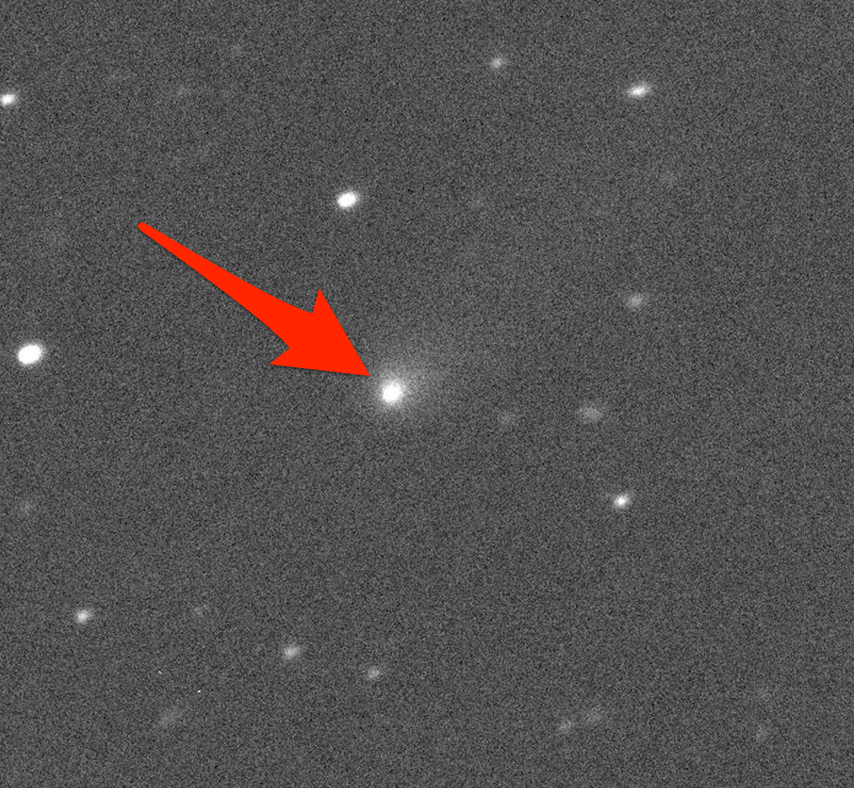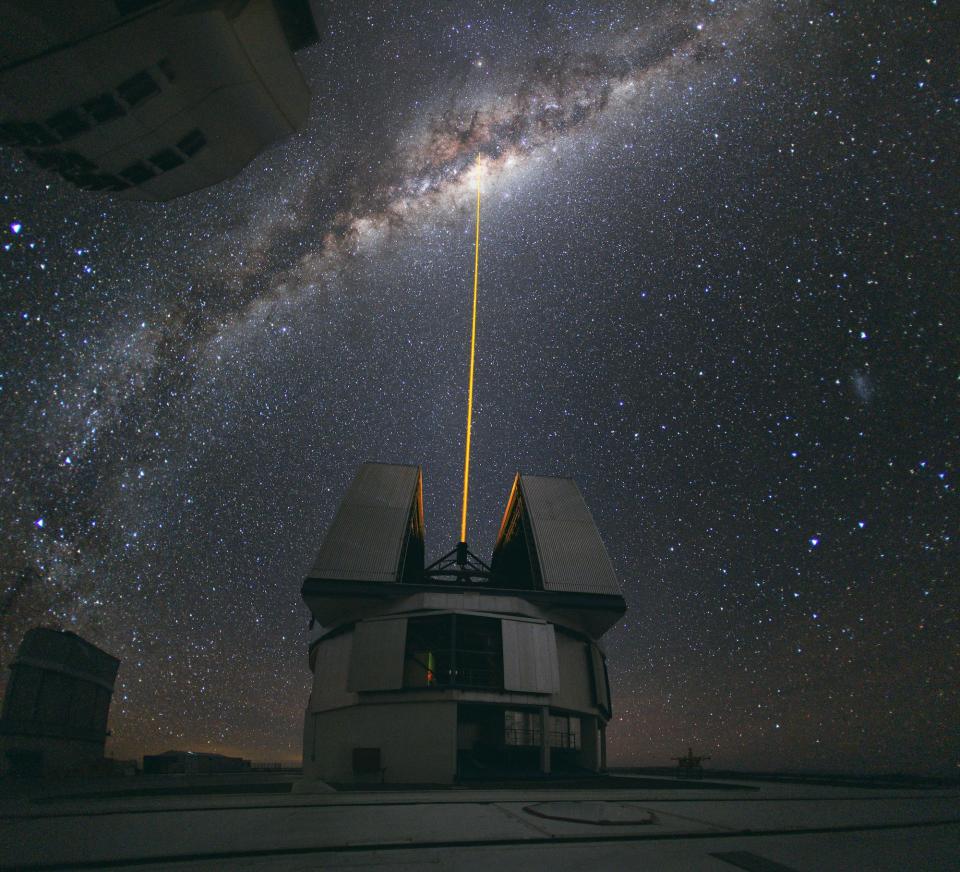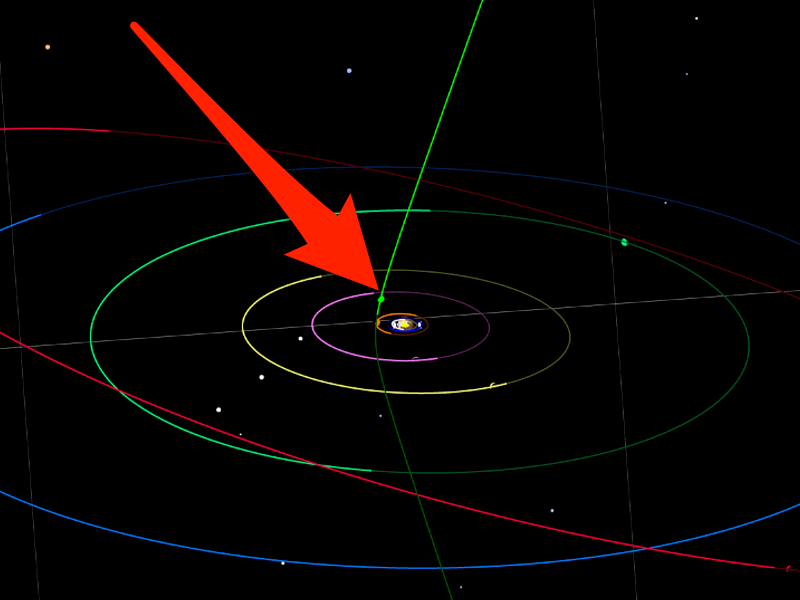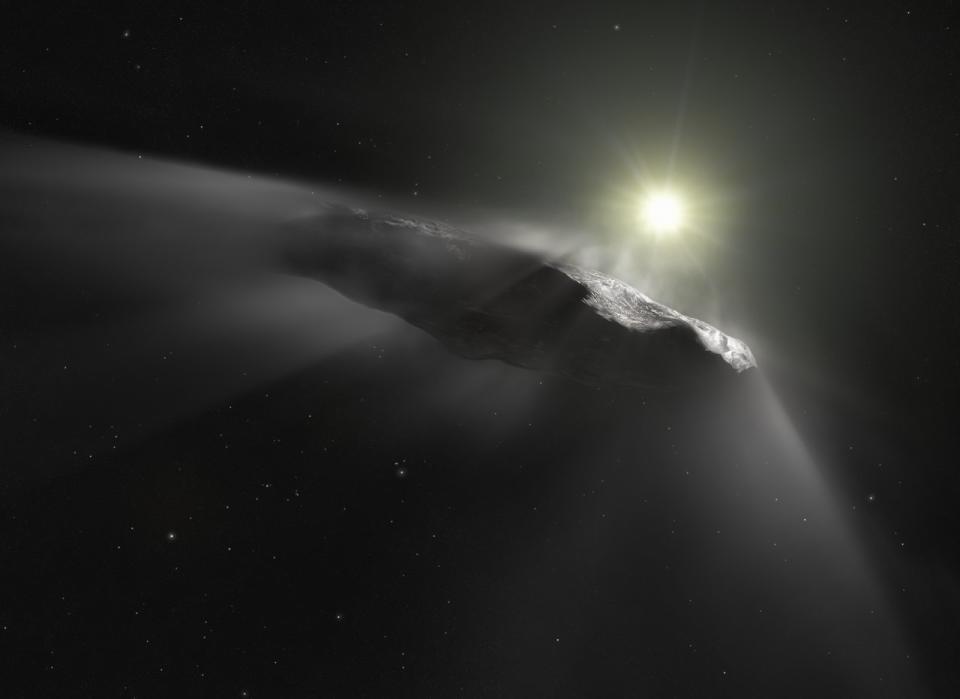It's official: The second interstellar visitor ever discovered is about to fly through our solar system

Astronomers have detected an interstellar object approaching our solar system.
Called "2I/Borisov" (formerly "C/2019 Q4" or "gb00234"), the object appears to be following a path originating from outside the solar system. It's expected to pass near Mars in October.
This is the second interstellar object ever observed in our solar system. The first, 'Oumuamua, took scientists by surprise in 2017.
This time, they're getting ready to watch 2I/Borisov with "everything" they can, one astronomer said. Scientists should be able to study the object until it grows too dim to see in early 2021.
Astronomers have spotted the second object ever known to visit our solar system from another star system. The object is expected to fly near Mars in October.
The International Astronomical Union (IAU) confirmed on Tuesday that the object, previously known as comet "C/2019 Q4 (Borisov)" (or "gb00234"), is interstellar, rather than a rock from within the solar system. The IAU gave the comet a new name: "2I/Borisov."
"The object is unambiguously interstellar in origin," the IAU wrote in a press release.
The first such interstellar object ever detected, the mysterious and cigar-shaped 'Oumuamua (which a few scientists controversially argued could be alien in origin), sped past Earth at a distance of 15 million miles in October 2017.
2I/Borisov's new name references its status as the second interstellar object ever detected (2I) and the amateur astronomer who spotted it: Gennady Borisov, in Crimea.
Borisov first saw the new comet in the sky on August 30, using a telescope he built himself. The comet hasn't yet entered our solar system, but astronomers have been collecting data in hopes of plotting the object's path through space and figuring out where it came from.
"It's so exciting, we're basically looking away from all of our other projects right now," Olivier Hainaut, an astronomer with the European Southern Observatory, told Business Insider earlier this month, before the object's interstellar status was confirmed. Hainaut was part of a global team of astronomers that studied 'Oumuamua as it passed through the solar system two years ago.
"The main difference from 'Oumuamua and this one is that we got it a long, long time in advance, " he added. "Now astronomers are much more prepared."
How we know this comet comes from another star system

Canada-France-Hawaii TelescopeA telescope system at NASA's Jet Propulsion Laboratory, called Scout, automatically flagged 2I/Borisov as a potential interstellar object. The comet traveling at 93,000 miles per hour and is expected to cross our solar system's orbital plane on October 26.
"The high velocity indicates not only that the object likely originated from outside our solar system, but also that it will leave and head back to interstellar space," Davide Farnocchia, who studies near-Earth objects at NASA, said in a press release.
The object's core is between 1.2 and 10 miles (2 and 16 kilometers) in diameter. It's expected to pass through our solar system outside Mars' orbit and get no closer to Earth than 190 million miles (300 million kilometers).
Early images suggest 2I/Borisov is followed by a small tail or halo of dust. That's a distinct trait of comets — they hold ice that gets heated up by nearby stars, leading them to shoot out gas and grit into space. The dust could make 2I/Borisov simpler to track than 'Oumuamua, since dust brightly reflects sunlight.
That reflected light could also make it easier for scientists to study the object's composition, since telescope instruments can "taste" light to look for chemical signatures.
"Here we have something that was born around another star and traveling toward us," Hainaut said. "It's the next best thing to sending a probe to a different solar system."
Astronomers plan to watch 2I/Borisov with as many telescopes as possible

ESO
Astronomers around the globe are grabbing every telescope available to plot 2I/Borisov's path through space.
First, they worked to determine whether the object had an orbit that's elliptical (oval-shaped and around the sun) or hyperbolic (checkmark-shaped, and on an open-ended trajectory). After a week of amateur and professional observations, both the IAU and NASA concluded that its orbit is hyperbolic.
"Of the thousands of comets discovered so far, none has an orbit as hyperbolic as that of 2I/Borisov," the IAU press release said.
The object's seemingly high velocity and comet-like shroud of dust also tilted the scales toward interstellar from the beginning, Hainaut added.

OrbitalSimulator.com
Astronomers plan to continue studying 2I/Borisov for at least a year.
"The object will peak in brightness in mid-December and continue to be observable with moderate-size telescopes until April 2020," Farnocchia said. "After that, it will only be observable with larger professional telescopes through October 2020."
That's a different approach than they took with 'Oumuamua, since astronomers had no idea that object was coming.
"We had to scramble for telescope time," Hainaut said. "This time, we're ready."
Hainaut and his colleagues have some smaller telescopes queued up for observations, but he said he'd like to use "everything" to observe 2I/Borisov. His team is trying to get time on the "big guys," including the Very Large Telescope in Chile, the Keck Observatory, and the Gemini telescope in Hawaii.
He said at least one colleague is working on a proposal to have the Hubble Space Telescope take a look. Others are seeking to use NASA's two infrared space telescopes: Spitzer and the Wide-field Infrared Survey Explorer, or WISE.
Scientists can learn about other star systems by studying objects like 2I/Borisov

ESA/Hubble; NASA; ESO; M. Kornmesser
2I/Borisov's interstellar status bodes well for a future mission that Hainaut is proposing, which would send robotic probes into space to intercept future objects like this.
"One of the main issues is: How many of these are there? If we detect one every century, it's hard to plan a mission to intercept one," he said.
On the other hand, if these objects come every couple of years, astronomers might even be able to get choosy about which object to intercept. The IAU noted that the discovery of 2I/Borisov suggests that interstellar objects are "sufficiently numerous" that a new window may open to investigate other star systems.
"This suggests we can afford to wait one or two or three years to get the right one, and maybe not the first one we spot after organizing a mission," Hainaut said.
This story has been updated with new information. It was originally published on September 12, 2019.
NOW WATCH: Why Harvard scientists think this interstellar object might be an alien spacecraft

